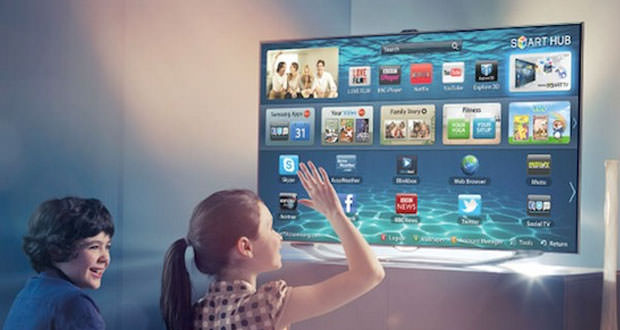All you need to know about Smart TV, the television that resembles both computers. Computers and television are two objects opposites. With the passage of time and as the technology evolves habits are changed. Today you use your computer for watching streaming movies or videos on Youtube while TV integrates more and more multimedia features that make the viewer more active than it has been in the past.
The advent of digital terrestrial has introduced a new way to watch TV channels and zap. The information provided have grown exponentially and the workload on the part of the device is increased to such an extent as to require the use of a microprocessor. Televisions are modern fledged computers disguised as a large screen that do not use operating system versions to which we are accustomed.
No wonder, if the hardware contained in TVs is due to that of the PC. We find Ethernet cards, Wi-Fi, USB ports and HDMI interfaces. Connected televisions, in short, be able to be able to read devices like USB pen drive or external hard drives that normally connect to your computer. Until recently, the TV was placed at will in the living room, now we have to worry about having the place where it is possible to make a wiring network.
Demanding more and more attention, the TV wants to become the protagonist of consumer and does so with the last frontier of Smart TV. Here you are smart televisions.

The TV manufacturers have taken inspiration from the world of tablet to enrich their screens with new features like the public. Taken as the model of the tablets, the Smart TV are able to go on the Internet without requiring a computer, to download and use the app and share screen material from other devices on the same network. As it is happening for the tablet, the purchase of Smart TV will change the system of preliminary assessment aiming towards components that make them more performing and one Store app widest possible audience.
Smart TV manufacturers are moving in this direction to meet the demands of users and to make it really attractive new devices. Among the major manufacturers of Smart TV are Haier, LG, Philips, Samsung, Sharp, Sony and Toshiba. The winner will likely be the one that will be able to have multiple applications for its platform.
The features of Smart TV
Network connectivity – A Smart TV that respects must be able to communicate with other devices belonging to your home network as the computer, Nas or phones so you can enjoy your media on the big screen. Network connectivity can be provided by an Ethernet cabling or via a Wi-Fi (if the TV intact inside a card for wireless networks).
Older models of TVs do not have a Wi-Fi card built in, but allow compatibility with some USB wireless dongle. The audio / video formats supported range from TV to TV even if all of them has promised to comply with the directions of the Recently more MPEG (Motion Picture Experts Group). Another factor to consider in choosing a Smart TV covers the standards support computer (UPnP DLNA).

A prerequisite for a comprehensive Smart TV is the presence of a greater number of possible USB ports with which you can connect storage devices of various types or even peripherals such as a QWERTY keyboard that facilitates such as Internet browsing.
Video recording on external memory
Advanced models of Smart TV allows you to connect via USB external storage to record your favorite programs. Being digital recording you can review a recording while it is still in progress without having to wait for it to end the program. In a modern television cannot miss the function of video in digital.
Not all manufacturers of Smart TV build good models. The war of the producers in the TV market and in particular of the Smart TV makes grow an increasing number of platforms. It would have been great if the majority of the builders had conformed to a standard, as was the case with Android in the smartphone and tablet, but this never happened, for obvious reasons of economic convenience. The brands that manage to impose more likely their platform are Sony and Samsung while for all others, the way to go is less traveled and steeper. Companies such as Philips, LG, Sharp and Panasonic to have the same opportunities should join forces to create an open platform.
For this, reason did the ” Smart TV Alliance “, an alliance initiated by LG and TP Vision founded over a year ago but still poor results, and few companies involved. The advantages of the Alliance regarding the release of a free SDK for developers interested in the development and application software compatible with the common platform.


